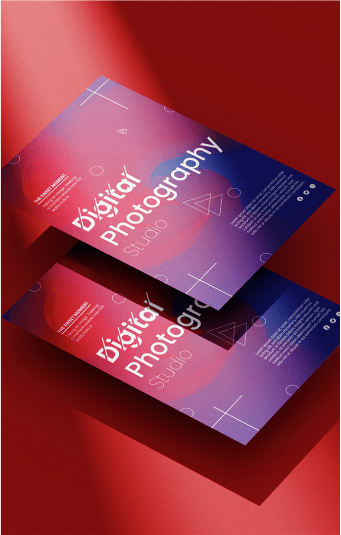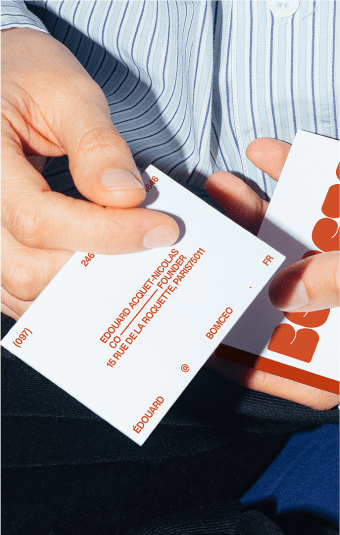Are you struggling to create a user-friendly interface for your website or application? UI design can be a complex process, but it is essential for creating a positive user experience. In this guide, we will take you through the principles of UI design, the UI design process, best practices, and current trends. By the end of this guide, you will have a solid understanding of UI design and how to simplify and streamline your interface design.
Introduction to UI Design
UI design, or user interface design, is the process of designing the visual and interactive elements of a website or application. UI design is not only about making something look good; it is also about creating a positive user experience. The primary goal of UI design is to make it easy for users to accomplish their goals and complete tasks without any confusion or frustration.
A well-designed user interface can improve user engagement, reduce bounce rates, and increase customer satisfaction. UI design is also essential for branding and creating a cohesive user experience across all platforms.
The Importance of UI Design for User Experience
UI design is critical for creating a positive user experience. A well-designed interface can make it easy for users to navigate your website or application, find what they need, and complete tasks quickly. On the other hand, a poorly designed interface can lead to confusion, frustration, and even abandonment.
The design elements of UI, such as color, typography, and layout, can also affect the emotional response of users. A well-designed interface can evoke positive emotions and create a strong connection between the user and the product or service.
Principles of UI Design
To create an effective UI design, it is essential to follow some basic principles. These principles include:
Consistency
Consistency is key in UI design. A consistent interface makes it easy for users to navigate and understand how to interact with the product. Consistency should be maintained across all pages and platforms.
Simplicity
A simple interface is easier to use and understand. Users should be able to complete tasks quickly and without any confusion. Avoid clutter and unnecessary elements.
Clarity
The interface should be clear and easy to understand. Use clear language and visual cues to guide users through the product.
Feedback
Provide feedback to users when they perform actions. This feedback can be visual or audible, but it should be clear and timely.
Accessibility
The interface should be accessible to all users, including those with disabilities. This includes designing for screen readers, color blindness, and other accessibility needs.
UI Design Process
The UI design process involves several stages, including user research, wireframing and prototyping, and testing. Let’s take a closer look at each stage.
User Research and Analysis
User research and analysis involve gathering data about the target audience, their needs, and their behavior. This data can be collected through surveys, interviews, and user testing. The goal is to create a user-centered design that meets the needs of the target audience.
Wireframing and Prototyping
Wireframing and prototyping involve creating a visual representation of the interface. A wireframe is a basic layout of the interface, while a prototype is a working model of the interface. These tools allow designers to test and refine the interface before moving on to the final design.
Color Theory and Typography in UI Design
Color theory is the study of how colors can affect people’s emotional response to a particular design. Color choices can influence a user’s mood, perception, and overall experience with a product. Therefore, designers should carefully choose colors that are appropriate for the product’s purpose and target audience. For instance, using bright, cheerful colors for a children’s game app may be more appropriate than using dark and muted tones.
Typography, on the other hand, refers to the style, size, and arrangement of text on a page or screen. A good typography design can significantly impact the readability and accessibility of a product. The text should be legible, easy to read, and visually appealing. Typography should also complement the color scheme and overall design of the product.
UI Design Tools and Software
There are many UI design tools and software available, including Sketch, Adobe XD, and Figma. These tools allow designers to create and test interfaces quickly and efficiently. It is essential to choose the right tool for the job and become proficient in its use.
Best Practices for UI Design
To create an effective UI design, it is essential to follow some best practices. These practices include:
Keep it Simple
A simple UI design ensures that users can navigate through the product effortlessly without getting lost or overwhelmed.
To achieve simplicity in UI design, it is essential to avoid clutter and unnecessary elements that can confuse users. A cluttered design can be overwhelming and confusing, leading to frustration and a poor user experience. Designers should focus on the product’s core functionalities and prioritize the most critical elements. A clear and straightforward design ensures that users can understand the product’s purpose, features, and benefits without any confusion or distraction.
Simplicity also means reducing the number of clicks and steps required to complete a task or access a feature. The more straightforward and intuitive the design, the more likely users are to engage with the product and achieve their goals.
Use Clear Language & Visual Cues
Clear instructions are necessary to help users understand how to use the product and achieve their goals. Instructions should be concise and to the point, avoiding any confusing language or technical jargon. Visual cues, such as icons and images, can also be useful in guiding users through the product. They provide an easy-to-understand reference point that users can quickly recognize and associate with specific actions.
UI UX designers can use various techniques to provide clear instructions and visual cues in the product’s design. For example, they can use tooltips or pop-ups to provide additional information about specific features or actions. They can also use animation and transitions to indicate changes in the product’s state or highlight important information.
Make it Accessible
With millions of people living with various disabilities worldwide, creating digital products that are accessible to all is not only a legal requirement but also a moral obligation. As such, UI designers need to design products with accessibility in mind, including screen readers and color blindness.
Screen readers are assistive technologies that convert text into speech or Braille for people with visual impairments. UI designers need to ensure that their designs are compatible with screen readers by providing alternative text for images, headings, and other content elements. They should also avoid using images as the only means of conveying information and provide text-based alternatives where necessary.
Color blindness, which affects around 8% of men and 0.5% of women worldwide, is another accessibility consideration in UI design. Designers should ensure that the product’s color palette is accessible to users with color blindness, which can be achieved by using contrasting colors, adding patterns or textures, or using symbols to supplement color coding.
Test and Refine
UI design is an iterative process, and testing and refining the user interface is a crucial part of that process. User testing and feedback provide valuable insights into how users interact with the product, what works well, and what needs improvement. This feedback can be used to make informed design decisions and create a better user experience.
User testing can take many forms, from usability testing to focus groups and surveys. Usability testing involves observing users as they interact with the product and gathering feedback on their experience. Focus groups and surveys can provide broader feedback on user preferences and opinions.
UI Design Trends and Innovations
UI design is constantly evolving, and it is essential to stay up-to-date with current trends and innovations. Some current trends include:
Dark mode
Dark mode is a popular trend that can reduce eye strain and improve battery life.
Minimalism
Minimalism is a trend that focuses on simplicity and minimal design elements.
Voice interfaces
Voice interfaces are becoming more popular and can provide a hands-free user experience.
Importance of UI Design in Mobile App Development
UI design is especially critical in mobile app development. Mobile interfaces are smaller and require a more streamlined design. A well-designed mobile interface can improve user engagement and retention.
Conclusion
UI design is an essential component of creating a positive user experience. By following the principles of UI design, the UI design process, and best practices, you can create a streamlined and user-friendly interface. It is also essential to stay up-to-date with current trends and innovations to create a modern and engaging interface. Remember, the goal of UI design is to make it easy for users to accomplish their goals and complete tasks without any confusion or frustration.







